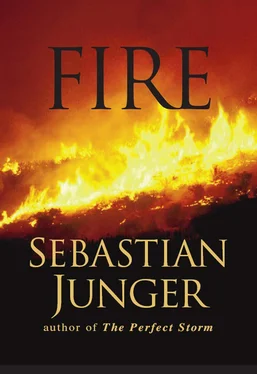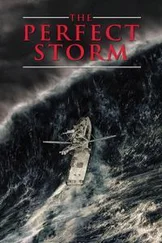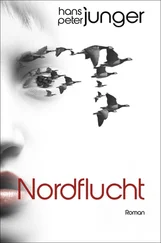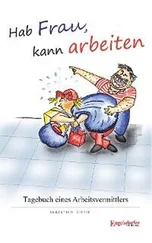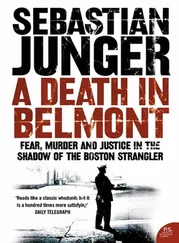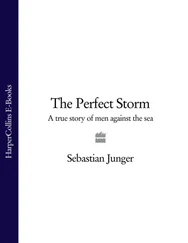The first big massacre occurred in March 1998, when Serb forces surrounded the village of Prekaz and wiped out fifty-eight civilians, many of them women and children. The attack was in retaliation for a shoot-out between KLA and Serb police a couple of weeks earlier, and it was the beginning of a horrible symbiosis between the two forces. Every time the KLA carried out a guerrilla attack, Serb forces would destroy the nearest village and massacre as many of the inhabitants as they could. And every time the Serbs massacred people in a village, more grief-stricken survivors joined the KLA. “For every massacre Serbs commit, we get twenty more recruits,” one KLA commander told a journalist friend of mine a few weeks before the NATO bombings started.
Ethically there’s an extremely thin line between ambushing Serb forces and deliberately provoking Serbs into massacring civilians, but the strategy worked. Around 8:00 P.M. on March 24, the first NATO warplanes struck targets deep within Serbia. And two months later, on May 24—just as the first sketchy peace agreements were being explored with Belgrade—the Hague war crimes tribunal indicted Slobodan Milošević and 4 other government and military leaders. The indictment was based on eyewitness accounts of massacres that took place between January and April 1999 in the villages of Racak, Krushe e Mahde, Krushe e Vogel, Bellacerka, Izbica, and Padalishte; the indictment listed, by name, more than 340 ethnic Albanians who had been killed. Within days of NATO’s arrival in Priština, war crimes investigators donated by many NATO countries were sifting through the mass graves named in the indictments, gathering evidence.
The crimes that Milošević and his compatriots were charged with fall under the Geneva Conventions of 1949, which were a direct outgrowth of the post–World War II Nuremberg trials. When the Germans surrendered on May 7, 1945, the Allies were suddenly faced with an unprecedented problem: They had in their custody Nazi officials who had started a war in which nearly fifty million people had been killed. Many of the dead had been exterminated in concentration camps, and the question was: What kind of justice should be brought to bear on the men who carried out such slaughter? The British initially suggested that the hundred or so main German culprits simply be taken out into the woods and shot (an idea embraced by Joseph Stalin, who jokingly—or maybe not—proposed upping the number to fifty thousand). Ultimately, though, due process prevailed. The accused would be given trials, which “they, in the days of their pomp and power, never gave to any man,” as the chief American prosecutor, Robert Jackson, put it. The trial would be open and fair, conducted in both English and German, and the accused would be represented by lawyers who would call their own witnesses and cross-examine others.
As idealistic as it was, the idea had inherent flaws. First, it was, by definition, a victor’s justice, and there was no suggestion that the victors would ever face the same scrutiny as the vanquished. The Soviets, for example, had invaded and occupied eastern Poland in 1939, in close cooperation with the Nazis; they massacred thousands of Polish officers and buried their bodies in the Katyn Forest. The Allies had fire-bombed Dresden, killing several hundred thousand civilians, and the Americans had fire-bombed Tokyo and then dropped nuclear bombs on Hiroshima and Nagasaki. These were all direct attacks on civilians—and therefore clear violations of international law—but they would never make it to the docket at Nuremberg.
Second, the Nazis were charged with, among other things, crimes against humanity, which include crimes committed by a government against its own people. At the start of World War II the law didn’t exist, and because the Holocaust was completely legal under German law, the perpetrators had technically never committed a crime. To charge them ex post facto was illegal and would never have stood up in a regular judicial proceeding.
These objections amounted to legal parlor games, however; the reality was that the Nuremberg trials were about as fair as things ever get in wartime. Out of the twenty-two Nazi leaders who were tried, twelve were sentenced to hang—including Reichsmarschall Hermann Göring, who swallowed a cyanide pill shortly before his execution; seven were sentenced to long prison terms; and three were acquitted. Three years later, the legal principles used in the trials were codified as the four Geneva Conventions and the Genocide Convention. Along with the Additional Protocols of 1977, they form the basis today of international war crimes trials. Because they are rooted in something called customary international law, which flows from norms evolved over centuries, rather than from treaties, the conventions are binding even on nations that have not signed them. A state, in other words, cannot exclude itself from the constraints of customary law any more than an individual can.
The indictments announced in The Hague on May 27 charged Yugoslav President Slobodan Milošević, Serb President Milan Milutinović, Deputy Prime Minister Nikola Sainović, Chief of Staff Dragoljub Ojdanić, and Serb Minister of Internal Affairs Vlajko Stojilković with three counts each of crimes against humanity and one count each of violation of the laws and customs of war. Copies of the arrest warrants were sent to all member states of the United Nations and the Yugoslav minister of justice; UN member states were asked to freeze the assets of the accused. The announcement of the indictments was delayed until representatives from international agencies could safely leave the former Yugoslavia, and eyewitnesses wouldn’t be identified until the accused were arrested. They could then be properly sheltered from threat and intimidation.
Of the two charges, violation of the laws and customs of war is the older and more traditional. It attempts to reconcile human suffering with the need of an army to defeat its enemy. Although constraints on wartime behavior date back to ancient Hindu and Greek law, the first European wasn’t tried in a civilian court until the late fifteenth century, when an Austrian nobleman named Peter von Hagenbach was sentenced to death for atrocities committed under his command. A hundred and fifty years later a Dutch lawyer named Hugo Grotius wrote The Law of War and Peace, which is considered the foundation of modern humanitarian law. “Throughout the Christian world…I observed a lack of restraint in relation to war, such as even barbarous races would be ashamed of,” Grotius wrote. “[A] remedy must be found…that men may not believe either that nothing is allowable, or that everything is.”
Modern laws and customs of war are direct descendants of Grotius’s work. In essence, these laws acknowledge that death and suffering are inevitable in armed conflict, but that deliberately inflicting unnecessary suffering is a criminal act for which individuals can be held accountable. If you shell a military base and happen to kill civilians, you have not committed a war crime; if you deliberately target cities and towns, you have. Killing prisoners, civilians, or hostages is a war crime, as are enslavement of civilians, deportation, plunder, wanton destruction, and “extensive destruction not justified by military necessity.”
What is and isn’t justified by military necessity is, naturally, open to interpretation. One of the key concepts, though, is the law of proportionality. A military attack that results in civilian casualties—“collateral damage”—is acceptable as long as the military benefits outweigh the price that is paid by humanity. A similar concept is applied to weapons. No matter how many people you kill, using a machine gun in battle is not a war crime because it does not cause unnecessary suffering; it simply performs its job horrifyingly well. Exploding bullets, on the other hand, which were banned in the St. Petersburg Declaration of 1868, mutilate and maim foot soldiers without conferring any additional advantage to the other side. A wounded soldier is usually put out of commission when he is hit. There is no reason to maximize his suffering by using an exploding bullet.
Читать дальше
